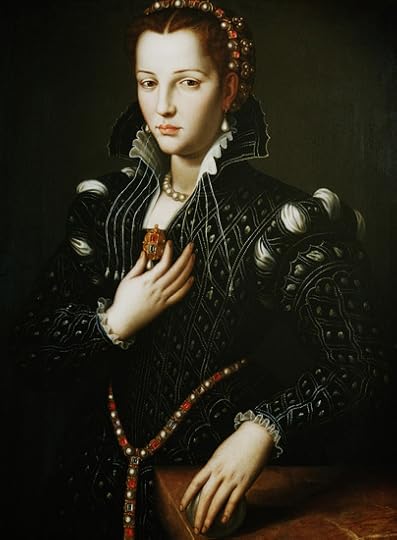Nichole Louise's Blog, page 7
December 22, 2023
Review: Hester by Laurie Lico Albanese
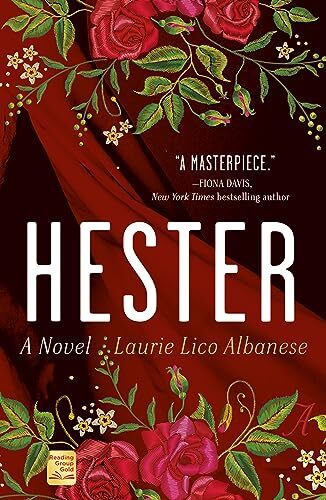
Hester by Laurie Lico Albanese weaves a backstory for a woman who (in this version) provided the inspiration for The Scarlet Letter‘s Hester Prynee. Young Scottish woman Isobel marries an apothecary whom she believes will provide for her a stable future. Isobel soon finds, however, that her husband has debts and is addicted to laudanum. Their troubles follow them across the ocean to their new home of Salem, MA. Just as soon as they arrive, her husband takes work aboard a ship, leaving Hester to fend for herself in this new world. She must rely on her talent of sewing and embroidery to survive.
Isobel’s gift comes from what she and her mother called “the colors,” which is what we now know as grapheme–color synesthesia. To Isobel, letters, words, and voices have specific colors attached to them. For example, the letter A is red. Isobel incorporates her interpretation of letters and words to colors in her embroidery and sewing, which soon gains popularity in a local shop. At the same time, Isobel meets a young Nathaniel Hathorne who is taken with Isobel’s unique beauty and quick mind. And Isobel, in turn, is taken with his brooding artist nature. But for all his charm, Nathaniel seems to objectify and use Isobel as a means for his own creativity and pleasure. Isobel befriends a few young women in Salem including her neighbor and a free Black woman, Mercy, Nell an Irish servant, and Abigail her co-worker at the dress shop.
Albanese’s descriptions of colors to words, letters, and voices are descriptive, both tangible and visceral. The use of Isobel having grapheme–color synesthesia was an interesting character trait for an author to write, which made Isobel’s interpretations of the world around her interesting to read.
One part of this novel really rubbed me the wrong way, and it was a conversation between Mercy, the free Black woman, and Isobel about social structure in Salem. Mercy basically says that Isobel being Scottish means she is treated the same way Black people are treated. I find it very hard to believe that a Black woman would have said this to a white woman, even if that woman was poor, Scottish, or Irish, considering many people in the early to mid 19th century still viewed people of African descent as sub-human.
One other gripe I had, not as pressing as the first, was that toward the end I found the writing to be repetitive and predictable–all a bit on the nose.
December 15, 2023
Raven Rock receives 5-star review from The Historical Fiction Company
Click here to read The Historical Fiction Company’s glowing review of Raven Rock!

December 12, 2023
Review: Matrix by Lauren Groff
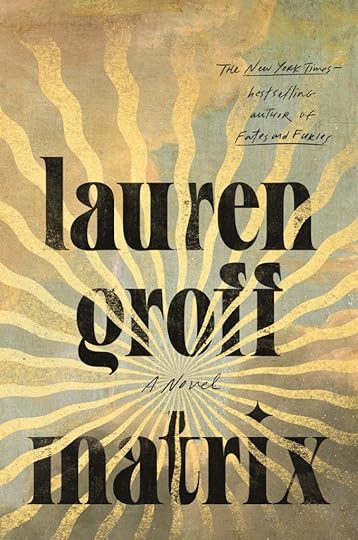
Matrix by Lauren Groff has been on my TBR for ages, and it wasn’t until I recently read The Vaster Wilds that I figured I better finally read this one.
What I thought I was getting into: a historical novel about Eleanor of Aquitaine.
What I actually got: Horny Medieval Nuns, but make it Literary
But in all seriousness, I did enjoy Matrix and found it beautifully written (as is to be expected with Lauren Groff).) Matrix follows 12th century abbess Marie de France, a contemporary of Queen Eleanor of Aquitaine who is sent by the queen to become a nun in England. Being an extended royal family member, Marie is essentially put on the fast track to become the abbess of the struggling abbey. Under Marie’s guidance and visions, the abbey flourishes as a powerhouse for the local community, as well as for the nuns within.
While little is known of the actual Marie, Groff has imagined her as a woman who may or may not have been the former lover of Eleanor and took her own servant Cecily as her lover. It is no surprise, then, that at the abbey and among women all the time that Marie engages in more same sex relationships, as do some of the other nuns with each other. What is interesting here is that Marie doesn’t have any religious guilt about this love and these pleasures of the flesh, but rather it is viewed through a prism of a sort of divine love and spirituality. Historically speaking, men/men relationships were viewed as blasphemous at this time, but women/women sexual relationships were not actually viewed as “sex” in the same way.
While Matrix follows almost the entirety of Marie’s day to day life and the realization of her visions (such as constructing a labyrinth outside of the abbey for protection,) Groff’s prose and narrative structure are more abstract (which is on par for her style.) Matrix is certainly about the harsh reality of the day to day life of nuns in the 12th century, but it is also very much an exploration of female love, spirituality, pleasure, and power–and finding peace and ownership of all those things, without shame.
If you’re looking for something with a more traditional plot structure and style, Lauren Groff may not be your cup of tea, but if you are open to beautiful, thought-provoking prose exploring aforementioned themes set against the grit of a medieval back drop, then this one might be for you.
December 6, 2023
Review: Maude Horton’s Glorious Revenge by Lizzie Pook
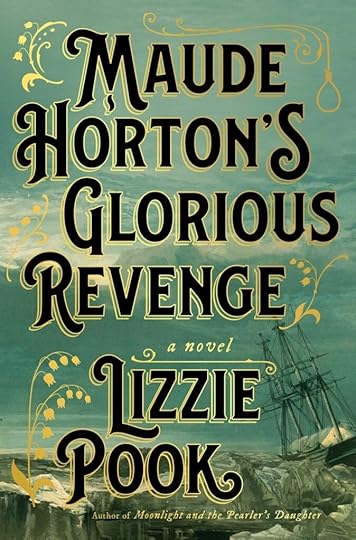
Full disclosure, I did not finish this book. I gave up around 65% because I just couldn’t slog through it anymore with little interest in the story. That’s not to say the prose was bad, because it wasn’t. In fact, the writer is skilled at constructing unique turns of phrases and descriptions. I think the execution and choice of who to focus on the most is what prevented me from getting invested in the story. Maude Horton’s Glorious Revenge begins when Maude receives a diary from her late sister, Constance, who had disguised herself as a man to work aboard the Arctic-bound Makepeace to search for Franklin’s lost ships. What Maude finds within those pages is a harrowing and harsh tale of survival, and a monster of a man, Edison, who Maude now hunts in London to discover what really happened to her sister in the Arctic.
When I first picked up this book, I assumed the story would be solely about a woman’s journey aboard the Makepeace. In truth, I personally think an entirely different book of just Constance’s journal entries would have been more engaging and successful as a narrative. The actual narrative, however, flips between Contance’s diary entries, Maude, and Edison. I was put off by the amount of time dedicated to Edison’s POV. I understand fleshing out villains to give them believable motivations from which the reader can find some kernel of understanding for their actions. There were no kernels of understanding for Edison’s actions, in fact he seemed quite evil and mercilessly violent, which I suppose was the author’s intent to build-up the assumed pay off revenge on Maude’s part. But half-way in, I felt I’d barely gotten to know Maude at all, which made it even harder to stay invested in the story.
November 20, 2023
Review: Ariadne by Jennifer Saint
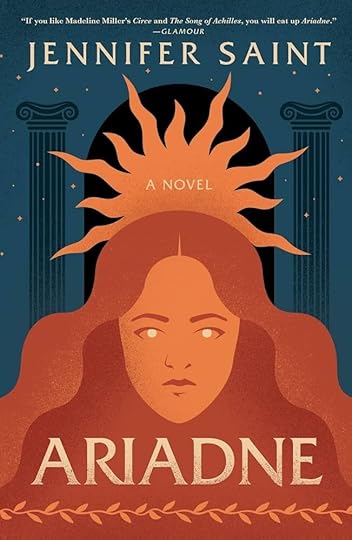
Ariadne by Jennifer Saint retells the myth of the Cretan princess who helped Theseus vanquish the Minotaur beneath the palace of Knossos. I was not super familiar with this Greek myth aside from the Minotaur and Theseus, so I went into this book with no expectations. The Minotaur is actually the half-brother of Ariadne – the product of her mother and a bull. Rather than succumb to the shame of such a union, King Minos (Ariadne’s father) keeps the Minotaur beneath the palace in a labyrinth constructed by the renowned inventor Daedalus. Each year, fourteen “tributes” are brought from the enemy city of Athens to be sacrificed to the Minotaur. This yearly tradition breaks when Theseus, prince of Athens, resolves to destroy the Minotaur and free his fellow Athenians.
Princess Ariadne is taken with the handsome, courageous Theseus and conspires to free and help him. He defeats the Minotaur, and he, Ariadne, and the rest of the Athenians flee. But they do not go to Athens. Instead, they sail to the island of Naxos where Theseus eventually abandons Ariadne.
She has lost all hope in her abandonment on an presumed lifeless island until she discovers it is the home of the God Dionysus. He is her new hope and life, giving her an existence filled with child-rearing and tending the his island sanctuary. But there is something sinister beneath the surface, as there is with all men as Ariadne finds.
Ariadne reminded me of The Shadow of Perseus by Claire Heywood (and I’m sure the myriad other Greek myth retellings that are popular now) in that behind every name of legend is nothing but a man who will stop at nothing to inflate his ego and renown. A man who cares only of his image, letting everything and everyone (often the women in his life) fall to ruin. While Ariadne straddles a place between legend and historical fiction, the latter is telling in the age old experiences of women living at the insidious, often chilling whims of men.
I found Ariadne to be a bit of a slow burn at first in retelling the original myth, and I did not find myself getting invested until about half way through the book. I wanted to know more about what Dionysus was actually up to given the hints and allusions here and there about his exploits and his followers, as well as how he truly felt about Ariadne. I didn’t always relate with Ariadne, but had to remind myself to view her within the social context in which she had been raised which was to marry and have children.
November 6, 2023
Review: Hazardous Spirits by Anbara Salam
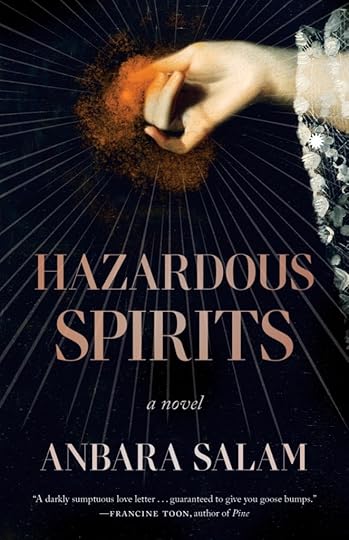
Hazardous Spirits by Anbara Salam is set in early 1920s Edinburgh, a time and place still very much impacted by the losses of WWI. Historically, this period was marked by a rise in mediums and Spiritualism as a means to contact the thousands of people killed during a war, as well as bring family members closure on their grief. The narrative follows Evelyn and Robert Hazard, a young couple whose life is turned upside when Robert, an unassuming accountant, reveals to Evelyn that he can hear messages from spirits. Robert also confesses has been attending meetings at the city’s Spiritualist Library and Hall, as well as having been taken under the tutelage of a ten year old medium prodigy, Clarence.
Evie is understandably very skeptical and hesitant at first. But slowly, as Robert’s alleged gift brings them into high brow social circles, Evie begins to accept his “gift” given the new crowd and social status she has been brought into. To be honest, I found both Evelyn and Robert to be irritating and unlikable for their own unique reasons. Evelyn is selfish and superficial, and only accepts Robert’s new venture after they are brought into the fold of a new social circle involving sprawling country estates, glamorous parties, and influential people she “befriends.” I put that in quotes because Evelyn doesn’t seem to genuinely like anyone except her late sister, Dolly. There were a few glimmers of relating to Evie (re her not wanting kids and her family being patronizing about that,) but I mostly found her judgemental nature of others very off-putting. Robert, on the other hand, seems very flaky, naive, and drippy, yet underneath all that it seems clear he has something to prove to the world since he was unable to serve in WWI due to a heart issue.
The only characters I liked in Hazardous Spirits were Clarence, the ten year old who is clearly being exploited by his family, and Flossie, Evelyn’s “frenemy” of sorts who Evelyn seems to privately judge very harshly at every turn. Anbara Salam has aptly conjured the glamorous, fast, “bright young things” social circles of the early 20s, yet the plot beneath is often at an arm’s length in that almost too much has been left up to interpretation or for the reader to fill in the gaps. The novel will at times abruptly switch to the past, causing temporal confusion until I was able to understand it was a flashback. Many plot points from Evelyn’s past are alluded to, but never paid out upon. What’s more, the novel ends quite abruptly without any real closure, leaving this reader feeling quite left hanging. Hazardous Spirits is less about mediums and Spiritualism, and more about the truth. What is the truth, and is it only in the eye of the beholder?
November 2, 2023
Raven Rock has been Shortlisted!
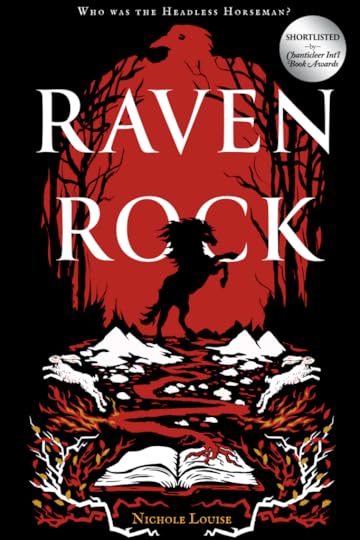
Chanticleer Book Reviews has shortlisted Raven Rock for their 2023 Goethe Historical Fiction Award. I am honored to be chosen as one of forty authors selected for the short list!
Raven Rock will now advance to the semi-finals!
October 27, 2023
Raven Rock ebook sale!
October 25, 2023
Review: The Foundling by Stacey Halls
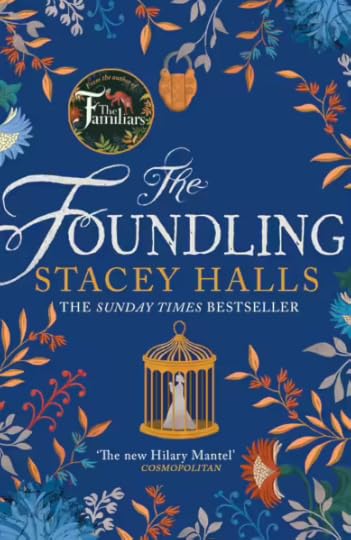
The Foundling by Stacey Halls, author of The Familiars, follows Bess Bright and Alexandra Callard – two very different women from two very different socioeconomic statuses who are bound by a child. The Foundling takes place in Georgian London–and if you set anything in Georgian London, I’m going to read it or watch it!
Bess Bright is a shrimp hawker, a unique profession for a main character in its wholly unglamorous nature. I enjoyed the little, gritty details about this aspect of Bess; for example, she wears a big hat with shrimp in it in which she scoops from for customers. What an interesting image! And what a smell that follows Bess. The novel opens with Bess dropping her newborn girl off at the Foundling Hospital with a heart token made of whalebone and a child number. Bess has the intent to save as much money as she can to collect her girl in a few years’ time. But when six years pass and Bess goes to collect her child, she is told the child was taken a mere day after by someone using the name Bess Bright.
This intriguing set up propels the story forth and keeps the reader engaged to know all the hows and whys. We later meet Alexandra Callard, the wealthy widow of the man who fathered Bess’s child. Halls keeps the reader guessing how she came to have Bess’s child. Alexandra isn’t exactly likeable, but a traumatic backstory is later revealed that provides explanation for her harsh, cold behavior, as well as her agoraphobia.
Having recently read Benjamin Franklin’s Bastard and The Square of Sevens, I couldn’t help but be reminded of both books as I read The Foundling, as there are similar premises and character dynamics. But Halls is in good company with those books.
I really enjoyed The Foundling and its depiction of class divides and the gritty, unglamorous aspects of the otherwise shining and sumptuous Georgian London. The only complaint I had was that the ending seemed too neatly tied in a bow and perhaps a bit unbelievable, but that’s just me!
October 12, 2023
Review: The Marriage Portrait by Maggie O’ Farrell
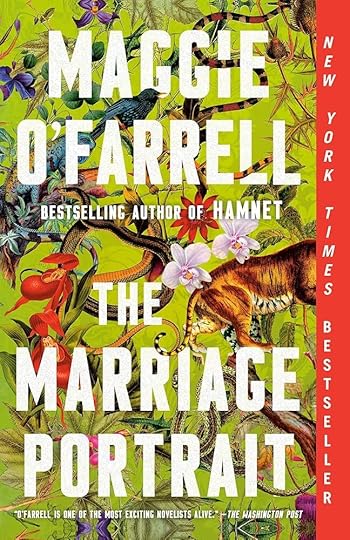
The Marriage Portrait by Maggie O’ Farrell tells the tale of the brief, tenuous life of Lucrezia de’ Medici, Duchess of Ferrara, who mysteriously died at the age of 16. After the sudden death of her betrothed older sister, Lucrezia is pushed into the role of replacement bride for Alfonso de’ Este, Duke of Ferrera, who is twelve years her senior. In The Marriage Portrait, they marry when Lucrezia is fourteen, but in reality she was only thirteen.
Lucrezia is the youngest child of Cosimo and Eleanora, different from the rest of the Medici children in not just looks but also mind. Lucrezia is curious, intelligent, precocious, and creative from a very early age. She has a keen interest in drawing and painting, as well as the natural world–specifically animals. She is fascinated by the exotic animals caged beneath her father’s palace in Florence, perhaps knowing that she will one day be little more than a pretty, caged animal.
Like many women throughout history, Lucrezia is forced into a marriage for political reasons. She is a bargaining chip of men. Her husband, the powerful and cunning Alfonso keeps a chilling distance from Lucrezia, keeping her in the dark about virtually everything in his life and family. Lucrezia is accustomed to being kept abreast of such situations, and expects it in her marriage as she had grown up seeing Cosimo keep Eleanor in the loop of all political and business dealings.
Alfonso plays his role of dutiful husband at the start, but through silent, subtle threats and a backing of immense power, Lucrezia begins to see a very different and dark picture of her husband. We read from Lucrezia’s perspective, so we never truly know Alfonso’s plans and motives for his actions. We can only assume he will stop at nothing to secure an heir. When Lucrezia pushes back about anything, even the on the benign, she is swiftly silenced and infantalized by her husband. Their marriage unfolds in a dark way as Lucrezia sits for a portrait and through this, befriends the artist apprentices. The narrative switches time periods that draw closer toward the end of the book, which at times left this reader a bit temporally and logistically confused.
Maggie O’ Farrell gives readers a hopeful, alternate outcome for Lucrezia, which makes the reality of her life and its end all the more heartbreaking.
